Category A Theory Test 1
01/25
1.What does this road sign indicate?

This warning sign, with its depiction of a main road and a smaller intersecting road, indicates a dangerous junction where the road you are on does not have priority over the intersecting road.
01/25
Progress
Category A Theory Test 1
02/25
2.What does this road sign require drivers to do?
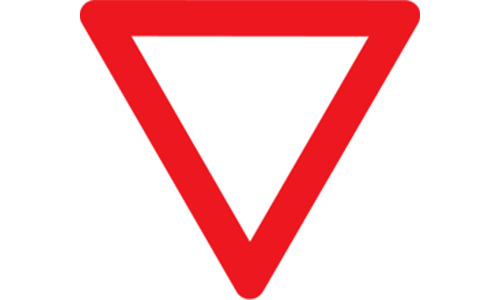
This sign indicates that you must give way to traffic on the road you are joining or crossing. You must slow down and be prepared to stop if necessary to allow other traffic to proceed safely.
02/25
Progress
Category A Theory Test 1
03/25
3.Seeing this sign at an intersection, what specific turn are you forbidden to make?
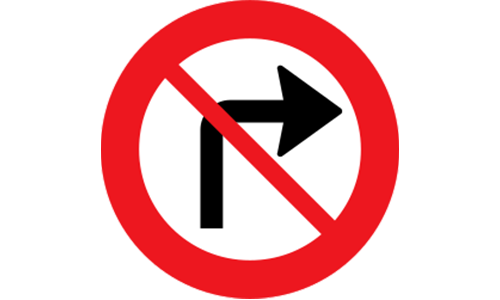
A right turn is prohibited at the junction or intersection where the sign is placed. Drivers must choose an alternative direction of travel.
03/25
Progress
Category A Theory Test 1
04/25
4.Upon seeing this sign, what is the only permitted direction of travel?

Drivers are required to proceed straight ahead. This sign is typically placed at intersections or on one-way roads where other turns, including left or right, are not permitted to maintain a specific flow of traffic.
04/25
Progress
Category A Theory Test 1
05/25
5.What is the required direction of travel indicated by this sign?

This sign indicates that drivers are strictly required to continue straight ahead at the upcoming intersection or road segment. All other movements, such as turning left, turning right, or making a U-turn, are prohibited to ensure a specific traffic flow direction.
05/25
Progress
Category A Theory Test 1
06/25
6.What does this sign indicate to drivers?

This sign indicates an upcoming exit from a main road, typically a motorway or expressway. It usually includes the exit number and the names of the destinations accessible via that exit, allowing drivers sufficient time to prepare for their turn and position their vehicle correctly.
06/25
Progress
Category A Theory Test 1
07/25
7.What type of road does this sign identify?
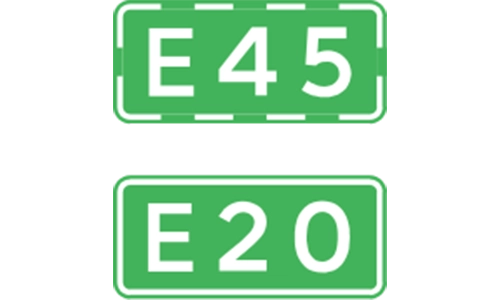
This sign indicates an E-Road, which is part of an international network of main roads in Europe. These routes facilitate long-distance travel across multiple countries, ensuring consistent numbering and signage for international drivers.
07/25
Progress
Category A Theory Test 1
08/25
8.What important commercial facility does this sign direct you to?
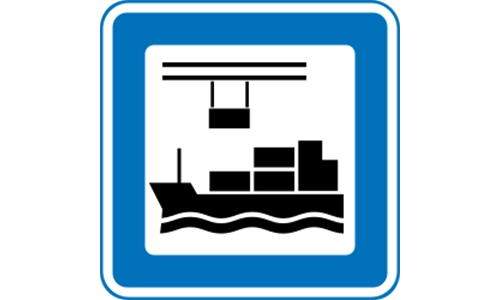
This sign indicates the location of a facility specifically designed for the loading, unloading, and handling of large commercial containers and cargo transported by sea, serving as a key point for maritime trade.
08/25
Progress
Category A Theory Test 1
09/25
9.What does a red and white triangular sign indicate when approaching an intersection?
These signs, along with white triangles on the road, mean that you must give way to traffic on the road you are about to enter. This ensures safe merging and intersection navigation.
09/25
Progress
Category A Theory Test 1
010/25
10.What is the general speed limit established for driving within urban areas?
The general speed limit in urban areas is 50 km/h. This limit is typically indicated by white plates showing town silhouettes.
010/25
Progress
Category A Theory Test 1
011/25
11.You are riding on a multi-lane motorway. Which lane should you normally travel in if youre not overtaking?
In Denmark, driving is on the right. You should stick to the rightmost lane unless youre overtaking. The left lanes are for passing onlyu2014failing to return can earn you a fine!
011/25
Progress
Category A Theory Test 1
012/25
12.On which side of the road is stopping and parking generally permitted?
Stopping and parking is as a rule permitted on the right side of the road. This aligns with standard traffic flow rules.
012/25
Progress
Category A Theory Test 1
013/25
13.You are driving through a quiet residential area. When is it generally acceptable to use your horn?
The use of the horn in built-up areas is strictly limited to situations where it is necessary to avoid a collision. Unnecessary or aggressive use of the horn is prohibited and can result in a fine. Think of it as a tool for safety, not communication or expressing frustration.
013/25
Progress
Category A Theory Test 1
014/25
14.Under what circumstances is it permissible to hold and use a mobile phone while operating a vehicle?
Danish law strictly prohibits the use of any handheld mobile phone or device with a screen while driving or when the vehicle is stopped on the road (except when parked legally). This includes making calls, texting, browsing, or using apps. The prohibition aims to minimize distractions and enhance road safety.
014/25
Progress
Category A Theory Test 1
015/25
15.Are there typically specific speed limits in the immediate vicinity of schools during drop-off and pick-up times?
Many school zones have clearly marked reduced speed limits that are in effect during school hours or at specific times when children are likely to be present. These limits are legally binding, and drivers must adhere to them to ensure the safety of students. Pay close attention to posted signs.
015/25
Progress
Category A Theory Test 1
016/25
16.When approaching a pedestrian crossing, what must a drivers speed adjustment ensure?
At pedestrian crossings, it is essential that speed must be adjusted so as not to endanger pedestrians in the crossing or stepping into it. This prioritizes pedestrian safety.
016/25
Progress
Category A Theory Test 1
017/25
17.What extreme penalty might a driver face if caught driving under the influence of alcohol with a very high blood alcohol content (e.g., 2.0 per mille or higher)?
Drivers caught driving under the influence of alcohol with a blood alcohol content of 2.0 per mille or higher, must expect that their car may be confiscated and auctioned off.
017/25
Progress
Category A Theory Test 1
018/25
18.For which occupants in a car are seatbelts compulsory, provided the seats are fitted with them?
Seatbelts are mandatory for all occupants, as they are compulsory for front and rear seat occupants, if fitted. This rule ensures safety for everyone in the vehicle.
018/25
Progress
Category A Theory Test 1
019/25
19.What substances are drivers generally prohibited from operating a vehicle under the influence of?
Driving is strictly prohibited under the influence of impairing substances. One is not allowed to drive under the influence of either alcohol or drugs/euphoriants, underscoring a zero-tolerance policy for impairment on the road.
019/25
Progress
Category A Theory Test 1
020/25
20.When must vehicles and motorcycles use dipped headlamps?
For enhanced visibility at all times, vehicles and motorcycles must use dipped headlamps even by day and in clear weather. This rule ensures vehicles are always easily seen by other road users.
020/25
Progress
Category A Theory Test 1
021/25
21.What should you do if a warning light stays on after you start driving?u00a0
A warning light that stays on could signal a serious issue with your vehicle.u00a0Find a safe space and pull over as soon as possible, and thoroughly check the vehicle to identify the problem.
021/25
Progress
Category A Theory Test 1
022/25
22.What should you do if you are feeling tired before driving?
Driving while tired significantly increases the risk of accidents. It’s safest to avoid driving until you are well-rested to ensure full alertness and concentration.
022/25
Progress
Category A Theory Test 1
023/25
23.What is overdriving your headlights?
Overdriving your headlights occurs when your stopping distance exceeds the distance you can see with your headlights, which can prevent you from stopping safely.
023/25
Progress
Category A Theory Test 1
024/25
24.What should you do when an emergency vehicle with flashing lights approaches from any direction?
When an emergency vehicle with flashing lights approaches, drivers must pull over to the shoulder and stop. This action allows the emergency vehicle to pass safely and quickly. Speeding up or continuing as normal can obstruct the vehicles path and endanger lives.
024/25
Progress
Category A Theory Test 1
025/25
25.What is the primary goal when dealing with aggressive driving and road rage?
Avoiding anger and managing stress helps you stay calm and safe, preventing escalation of road rage situations.
025/25
Progress
Your Progress 0/25
- 1
- 2
- 3
- 4
- 5
- 6
- 7
- 8
- 9
- 10
- 11
- 12
- 13
- 14
- 15
- 16
- 17
- 18
- 19
- 20
- 21
- 22
- 23
- 24
- 25
0 Correct
x 0 Incorrect
- Passing Score 80%

Ace the DMV Exam on Your First Attempt
Unlimited mock tests
Access Over 1000 Exam Like Questions for Just $3
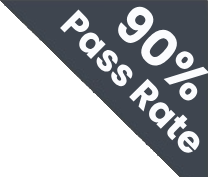
Ace the DMV Exam on
Your First Attempt

 Pass the Exam Easily with Detailed 3-Level Practice | 1-Day Full Access Free — Offer Ends in
Pass the Exam Easily with Detailed 3-Level Practice | 1-Day Full Access Free — Offer Ends in



